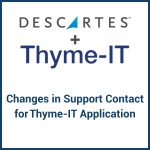How to enter the Carrier Code on AES
Are you an exporter moving goods out of the European Union? If so, it’s important to understand the new data element “Carrier Code” on the new Automated Export System (AES) from the Irish Revenue. This article will provide you with all the information you need to know about this new requirement.
According to Article 5(40) of UCC Reg 952/2013, the carrier, in the context of exit, is defined as the person who takes the goods, or who assumes responsibility for the carriage of the goods, out of the Union. However, under a vessel-sharing or contracting arrangement, the “carrier” means the person who concludes a contract and issues a bill of lading or airway bill for the actual carriage of the goods out of the Union.
The AES is a combined declaration consisting of the export declaration and the safety and security declaration at exit (EXS). For all safety and security declarations, both inbound and outbound, the EORI number of the carrier is a mandatory data element in most instances. It’s also important to note that the EORI number must be an EU EORI number – a GB EORI number is not recognized.
When declaring the carrier’s EORI number into Revenue’s new AES system for your export declaration, there are some important points to keep in mind:
- For accompanied vehicles, the carrier is deemed to be the haulier as the vehicle is the active means of transport crossing the border. Therefore, the declarant must declare the EORI number of the haulier in the Carrier ID field. If a GB haulier is moving the goods, they must have an EU EORI number.
- For unaccompanied trailers, the carrier is deemed to be the ferry operator as the ship is the active means of transport crossing the border. Therefore, the declarant must declare the EORI number of the ferry operator in the Carrier ID field.
Revenue has also provided examples of how to complete the Transport Information on your AES declaration where goods are moving on a RoRo ferry:
Scenario 1
Where goods are moving on a RORO ferry in an unaccompanied trailer then the Ferry Operator’s Number should be included in the Carrier ID field. The mode of transport should equal 1 – Sea. The identity means of transport should equal the IMO of the ferry and in the additional Reference field, declarants should include code 1D95 along with the trailer number.
Scenario 2
Where the goods are moving on a RORO ferry on an accompanied truck then the haulage company is the carrier, and their number should be included in the Carrier ID field. The mode of transport should equal 3 – Road. The identity means of transport should equal the registration number of the truck and in the additional Reference field for Item 1, declarants should include the code 1D94 along with the IMO number of the vessel.
In the second scenario, if the haulage company only has a GB EORI, and the goods are moving on an accompanied truck, AES will not accept a GB number. In this case, the Ferry Operator’s EORI number should be included in the Carrier field.
When can the Carrier ID field be left blank?
- Where the declarant is different to the carrier, the Carrier ID field is a mandatory data element and must be completed. Where both the carrier and the declarant are the same, the carrier field should not be completed.
- When the destination country of the goods is either Norway or Switzerland, then because both countries are part of the Safety and Security regime, the carrier ID field does not have to be completed.
It’s essential to have the correct EORI number of the carrier when submitting your AES export declaration. By following these guidelines, you can ensure a smooth export process and avoid any potential delays or penalties.




